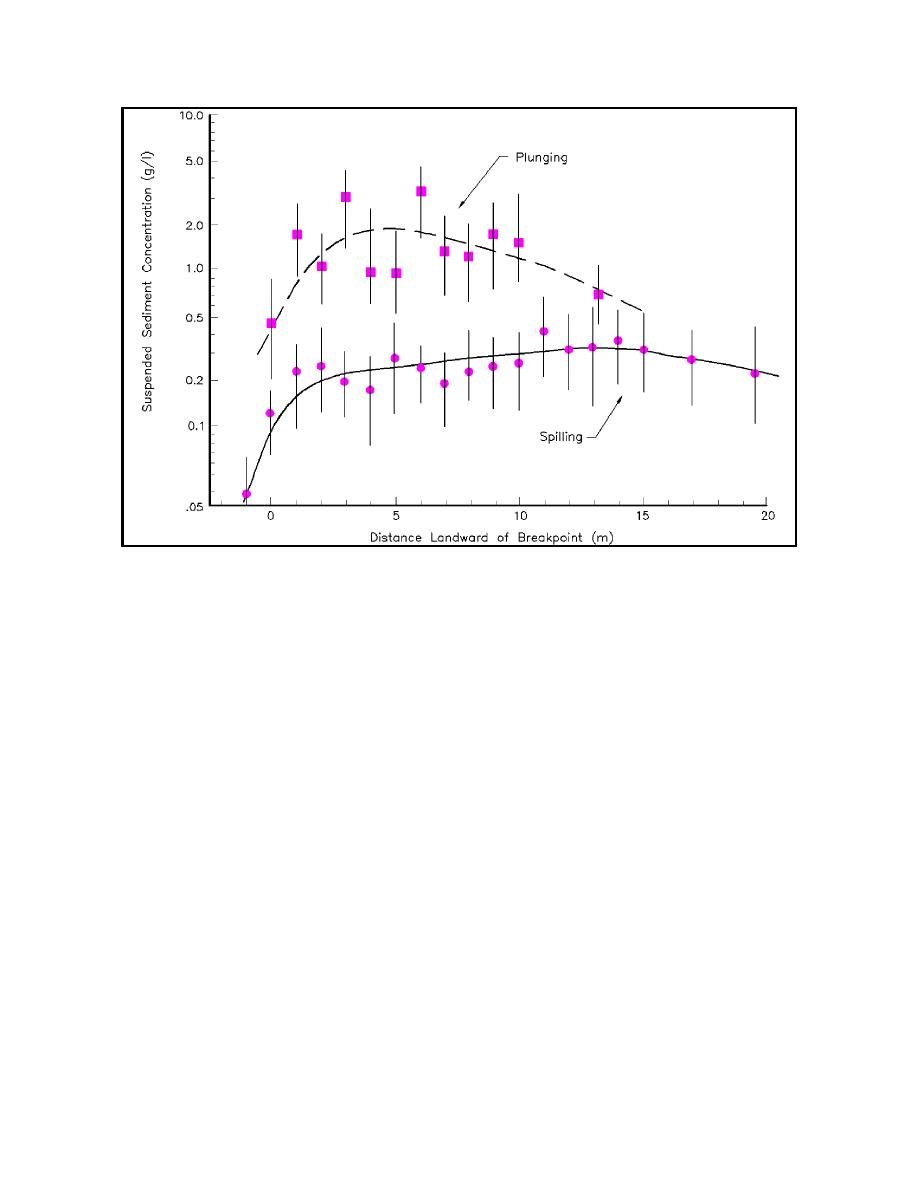
EM 1110-2-1100 (Part III)
30 Apr 02
Figure III-2-20. Distribution of mean sediment concentration at 10 cm above the bed, relative to wave
breakpoint (Kana 1978)
Bodge and Dean (Bodge 1986; Bodge and Dean 1987a, 1987b) utilized a short-term sediment impoundment
scheme in the field and laboratory, consisting of the rapid deployment of a low profile, shore-perpendicular
barrier. Beach profile changes in the vicinity of the barrier were determined from repeated surveys over short
intervals of time, simultaneously with measurements of surf zone wave heights and currents. Four separate
field experiments were undertaken at the CHL Field Research Facility at Duck, North Carolina. Two cross-
shore distribution profiles from the field experiments are shown by the light lines in Figures III-2-21a and
III-2-21b, indicating the presence of a maxima in the outer surf zone just shoreward of the breaker zone, and
a second maxima in the swash zone. Light lines in Figures III-2-21c through III-2-21g show laboratory
results for wave types including spilling, plunging, and collapsing. The plunging/spilling laboratory
conditions (Figure III-2-21d) were modeled after the surf zone conditions of the field experiment in
Figure III-2-21a. The error bars on the light lines indicate the most probable range of the local longshore
transport contribution at each location across the surf zone, reflecting uncertainties in the assessed local
magnitude of cross-shore transport, updrift limit of impoundment, and/or the degree of groin bypassing. The
data suggest that the transport distribution is generally bimodal with peaks at the shoreline and at the mid-
outer surf zone. The relative significance of the peaks was seen to shift from the near-breakpoint peak to the
near-shoreline peak as the breaking wave condition varied from spilling to collapsing. Longshore transport
seaward of the breakpoint represented about 10 to 20 percent of the total. Swash zone transport accounted
for at least 5 to 60 percent of the total for spilling to collapsing conditions, respectively.
(5) In general, the field (and laboratory) studies of longshore transport indicate that (1) significant levels
of transport may occur at and above the shoreline, (2) about 10 to 30 percent of the total transport occurs
seaward of the breaker line, (3) maximum local transport has been noted within the shoreward half of the surf
zone as often as within the seaward half, and (4) greater transport is often associated with shallower depths
III-2-40
Longshore Sediment Transport


 Previous Page
Previous Page
